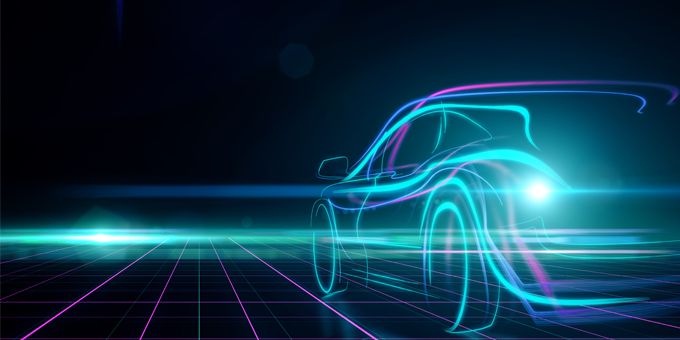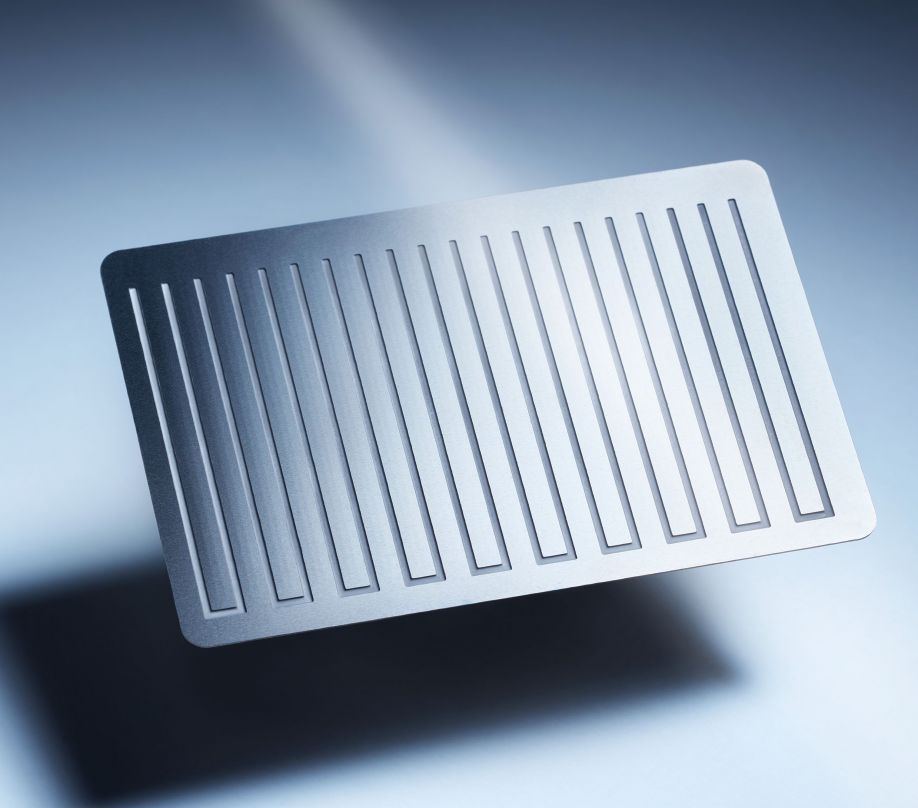Reduction of weight is an essential part of the EV revolution, a goal which can be achieved through etching, suitable applications including alkaline battery connectors and busbars.
 Photo Chemical Etching Gives Manufacturers the Edge in Electric Vehicle Production
Photo Chemical Etching Gives Manufacturers the Edge in Electric Vehicle Production

Jochen Kern, Head of Sales & Marketing, | micrometal GmbH
Photo-chemical etching (PCE) is the perfect choice for metal component production in the quickly-changing alternative powertrain supply chain. Its versatility and accuracy permits the fabrication of different prototypes no matter how many design iterations, even in shape memory alloys.
Reduction of weight is an essential part of the EV revolution, a goal which can be achieved through etching, suitable applications including alkaline battery connectors and busbars. Additionally, two sides of a plate can be etched simultaneously. Cooling plates for battery management systems can be formed from steel, titanium, or aluminium, and bipolar plates for fuel cell stacks are possible too with these same metals.

THE EV REVOLUTION
New and sustainable mobility technologies are in high demand due to the increasing drive for alternative powertrains fuelled by initiatives in Europe and the United States.
In the EU, the European Commission has set a target of having at least 30% of new cars sold be electric by 2030. To help reach this goal, a number of financial incentives are available, including grants for buying electric vehicles and installing charging points. The Commission is also working on developing a comprehensive network of charging infrastructure across Europe.
In the United States, the federal government offers a tax credit of up to $7,500 for purchasing an electric vehicle. A number of states also have their own incentive programs. In addition, the US Department of Energy is investing over $4 billion to develop a nationwide network of fast-charging stations.
PHOTO CHEMICAL ETCHING
As a precision metal part fabrication process, PCE is well suited to the production of some of the critical EV components such as bipolar plates used in fuel cells, making them in a cost-effective, precise, and speedy fashion, while at the same time stimulating innovation by providing design freedom.
PCE is a subtractive metal processing method that involves selectively removing metal from a flat metal surface with the use of a chemical reagent to produce desired shapes or patterns. The process captures CAD drawings in transparent photo-tools, then converts them into a negative image which is developed on a photoresist covering the metal surface.
The process has a number of benefits, as it produces intricate parts, with complex patterns or varied opening profiles in thin metallic sheets ranging from dozens of microns to around 2 millimetres thick. It outperforms other methods, like traditional metal cutting and stamping.
Etching can be employed to work on a wide range of metals, from stainless steels to copper and nickel to aluminium, not forgetting clad materials and shape memory alloys. Every metal has its own etching traits, and the expertise of your chosen PCE specialist will tailor etchant chemistries to the precise metal being processed in order to get optimal performance and excellent results.
PCE & BI-POLAR PLATE MANUFACTURE
With the global fuel cell market expected to reach $25 billion by 2025, international pressure on energy diversification has generated a keen investment atmosphere towards alternative energy sources — of which fuel cells are close to being the most effective.
The requirement for fuel cells to be increasingly efficient and cost-effective is having a major impact on the materials used and the manufacturing methods chosen.
Historically, CNC-machined graphite has been the material of choice for producing bipolar fuel cell plates. Unfortunately, it is rather expensive and suffers from excessive permeability, making it unsuitable for mass production. Metal alloys such as stainless steel and titanium are gaining popularity due to their cost-effectiveness and simple manufacturability. Moreover, stainless steel offers many great benefits for fuel cell applications, including remarkable strength, chemical stability, and durability.
Fuel cells are made up of intricately machined plates with grooves or channels to allow gas and liquid flow, but the scalability and ability of CNC-machining, hydroforming, and stamping techniques is questionable.
Stamping and hydroforming are common metalworking techniques, however these processes can cause planarity issues, as well as stress and burrs. Additionally, single-point machining processes and presswork tooling can be both time consuming and expensive, particularly during research and development.
PCE provides manufacturers with a viable means of producing complex components, such as bipolar fuel cell plates, with noteworthy benefits.
Utilising digital tooling instead of hard tooling, PCE offers the significant benefit of being cost-effective and allows designs to be readily customised. This is hugely advantageous in terms of optimising without incurring excessive expenses.
The process facilitates quick scale up from a prototype to high volume production, with almost no limit on the complexity of components - ideal for fuel cell plates that must be free of imperfections in order to successfully bond the stack. It does not affect the temper or properties of metals, is suitable for all grades of steel, and accuracy is ensured at ±0.025 mm; all done in days instead of months.
PCE is a versatile technology which allows for the simultaneous removal of metal. This enables complex patterns and channels to be etched to an accuracy of 0.025mm on both sides of the plate, with features such as headers, collectors, or ports easily achievable at no extra cost.
At the micrometal Etching Group, we can also produce these components in certain exotic and hard to machine metals, such as titanium, for lighter weight and superior protection from corrosion in high-temperature fuel cell applications.
The PCE process is a compelling option for the manufacture of complex sheet metal parts across multiple applications, due to its versatility. This approach can stimulate innovation, removing barriers inherent in traditional manufacturing technologies and hence providing design engineers with more freedom.
The content & opinions in this article are the author’s and do not necessarily represent the views of AltEnergyMag
Comments (0)
This post does not have any comments. Be the first to leave a comment below.
